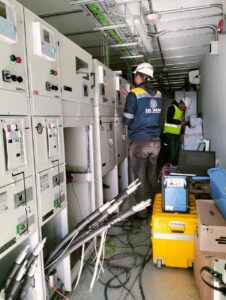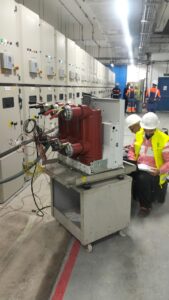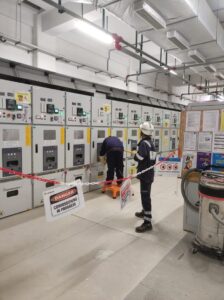In the modern world, electricity has become an indispensable part of daily life, driving countless innovations and conveniences that enhance our lifestyle. From household comforts to advanced healthcare and education, the pervasive presence of electricity has transformed the way we live, work, and interact. Here, we explore how the use of energy, especially electricity, ameliorates our lifestyle across various domains.
1. Household Comfort and Convenience
Appliances and Gadgets
Electricity powers a wide array of household appliances and gadgets that simplify daily tasks and improve our quality of life. From refrigerators that preserve our food to washing machines that save us hours of manual labor, these devices provide convenience and efficiency. Modern kitchen appliances, such as microwaves, dishwashers, and electric ovens, enable quicker and more efficient meal preparation, allowing us to spend more time with family and on personal pursuits.
Heating and Cooling
Climate control is another significant benefit of electricity. Heating, ventilation, and air conditioning (HVAC) systems maintain comfortable indoor temperatures regardless of external weather conditions. This not only enhances comfort but also promotes health and well-being by providing a stable and safe living environment.
Lighting
Electric lighting extends the day, allowing us to work, study, and engage in leisure activities even after sunset. The advent of energy-efficient LED lighting has further improved the quality and affordability of indoor and outdoor illumination, contributing to safer and more vibrant communities.
2. Healthcare and Well-being
Medical Devices and Equipment
Electricity is crucial in the healthcare sector, powering essential medical devices and equipment. From diagnostic tools like MRI and CT scanners to life-saving devices such as ventilators and defibrillators, electricity enables advanced medical care and improves patient outcomes. In-home healthcare devices, such as blood pressure monitors and electric wheelchairs, provide autonomy and improved quality of life for individuals with chronic conditions.
Telemedicine
The rise of telemedicine, driven by reliable electricity and internet connectivity, allows patients to consult healthcare professionals remotely. This is particularly beneficial for individuals in remote or underserved areas, ensuring timely medical advice and reducing the need for travel.
3. Education and Learning
E-Learning and Digital Resources
Electricity powers computers, tablets, and other digital devices that have revolutionized education. E-learning platforms and digital resources provide access to vast amounts of information and learning opportunities, enabling self-paced and remote education. This has become especially important during the COVID-19 pandemic, allowing students to continue their studies from home.
Classroom Technology
In traditional classrooms, electricity supports a range of educational technologies, including projectors, interactive whiteboards, and multimedia systems. These tools enhance teaching methods, making learning more engaging and effective.
4. Work and Productivity
Remote Work
The shift towards remote work, accelerated by the COVID-19 pandemic, relies heavily on electricity. Computers, internet connectivity, and communication tools like video conferencing software allow employees to work from home efficiently. This flexibility improves work-life balance and can lead to increased productivity and job satisfaction.
Automation and Efficiency
Electricity powers automation technologies in various industries, increasing efficiency and productivity. From manufacturing robots to smart office systems, these innovations reduce manual labor and optimize workflows, driving economic growth and improving job quality.
5. Transportation and Mobility
Electric Vehicles (EVs)
The adoption of electric vehicles (EVs) is transforming the transportation sector. EVs offer a cleaner and more sustainable alternative to traditional gasoline-powered vehicles, reducing air pollution and dependence on fossil fuels. Advancements in EV technology, supported by electricity, promise improved range, faster charging times, and more accessible charging infrastructure.
Public Transport
Electricity also powers various forms of public transport, including trains, trams, and buses. Electrified public transport systems are more energy-efficient and environmentally friendly, contributing to cleaner urban environments and better public health.
6. Entertainment and Leisure
Home Entertainment
Electricity has revolutionized home entertainment through devices like televisions, gaming consoles, and sound systems. Streaming services, powered by electricity and internet connectivity, provide on-demand access to a vast array of movies, shows, and music, enriching our leisure time.
Smart Homes
The advent of smart home technology, driven by electricity, allows for the automation and remote control of various household systems. Smart thermostats, lighting, security systems, and home assistants enhance comfort, security, and energy efficiency, providing a more convenient and interconnected lifestyle.
7. Industrial Applications
Manufacturing and Production
Electricity is a cornerstone of modern manufacturing and production processes. It powers machinery, assembly lines, and industrial robots that produce goods with precision and efficiency. Automated production lines enhance productivity, reduce human error, and lower costs, ultimately leading to higher-quality products.
Energy Management Systems
Electricity enables the use of sophisticated energy management systems in industrial settings. These systems monitor and optimize energy usage, reducing waste and improving overall efficiency. Smart grids and renewable energy sources like solar and wind power are increasingly integrated into industrial operations, promoting sustainability.
8. Building Industry Projects
Construction Technology
Electricity drives a range of technologies in the construction industry. Electric tools and machinery, such as drills, saws, and cranes, improve the speed and safety of construction projects. Advanced construction techniques, including 3D printing and prefabrication, rely on electric power to create complex structures more efficiently.
Sustainable Building Practices
Electricity is essential for implementing sustainable building practices. Energy-efficient lighting, heating, and cooling systems reduce the environmental impact of buildings. Smart building technologies allow for the automation and control of various systems, optimizing energy usage and enhancing the comfort of occupants.
Conclusion
The use of electricity has fundamentally transformed our way of life, offering numerous benefits that enhance comfort, health, education, productivity, and entertainment. Its impact extends to industrial applications and building industry projects, driving innovation and efficiency. As we continue to innovate and improve our energy infrastructure, the potential for electricity to further ameliorate our lifestyle is boundless. Embracing sustainable and efficient energy practices will ensure that these benefits are accessible to all, fostering a brighter and more prosperous future.





